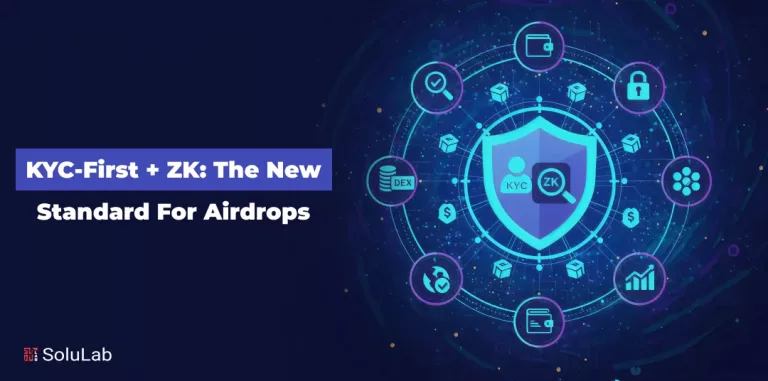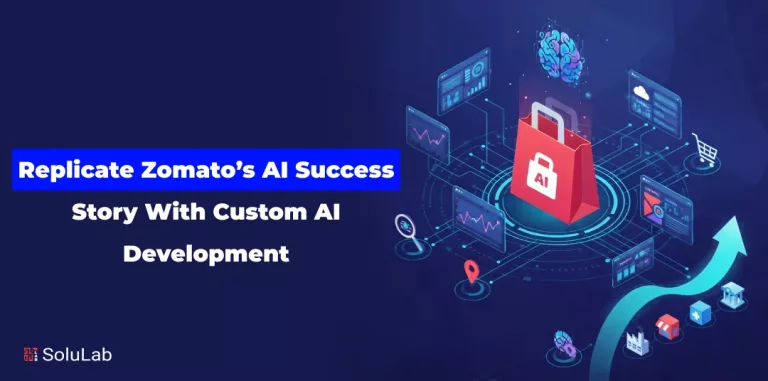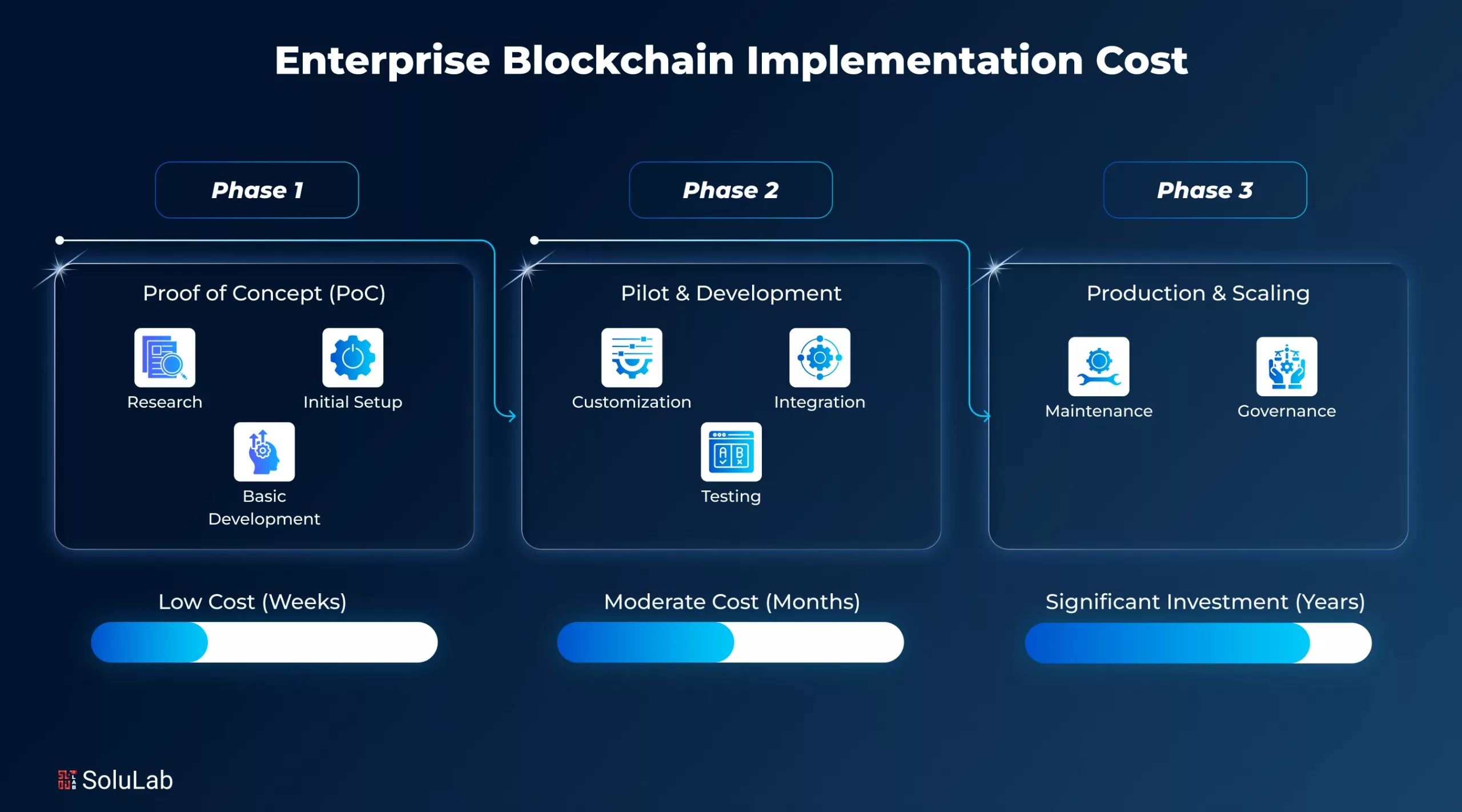
Are you looking to develop a blockchain from PoC to full-scale production? Do you need clear guidance and insights? Before jumping into the project, entrepreneurs must know the costs and plan accordingly. Blockchain technology is emerging as a game-changer in finance, healthcare, supply chain, and many other industries.
If you are starting with a Proof of Concept (PoC) or planning a production-ready solution, you must know the process. This blog guides you from the PoC definition to implementation, costs, tools, and its benefits. Let’s check out how to develop a proof of concept!
What is Blockchain PoC?
Blockchain PoC is a model created to test a blockchain idea without launching a full product. This test proves whether the blockchain solution works as intended. It also helps stakeholders check how it fits with current systems.
The purpose is simple. Avoid large investments before validating performance and security. Proof of concept development gives enterprises confidence by showing what’s possible with blockchain. This is where businesses partner with blockchain consulting and proof of concept development services to avoid technical surprises.
Understanding Blockchain Proof of Concept for Enterprises
Proof of Concept (PoC) in blockchain helps businesses test if the technology fits their real-world goals. It is a small-scale project designed to evaluate whether blockchain can solve a specific enterprise problem. Before going full-scale, companies use PoC to assess practicality, technical compatibility, and overall value.
PoCs help reduce risk by revealing gaps early. For many enterprises, it acts like a controlled sandbox. This method allows leadership to make data-driven decisions before committing major investments. Blockchain proof of concept development often begins at this stage to validate the direction.
Key Objectives Behind Enterprise Blockchain PoCs
The primary goal of blockchain PoC is to validate a use case through a working model. It checks for feasibility and expected outcomes. Startup businesses generally use PoC to evaluate their system scalability, transparency, and immunity. Not only do these PoC also identify potential problems early, including integration challenges or legal compliance issues. At last, it aids in securing buy-in from makers, and the transparency decides the approval of production.
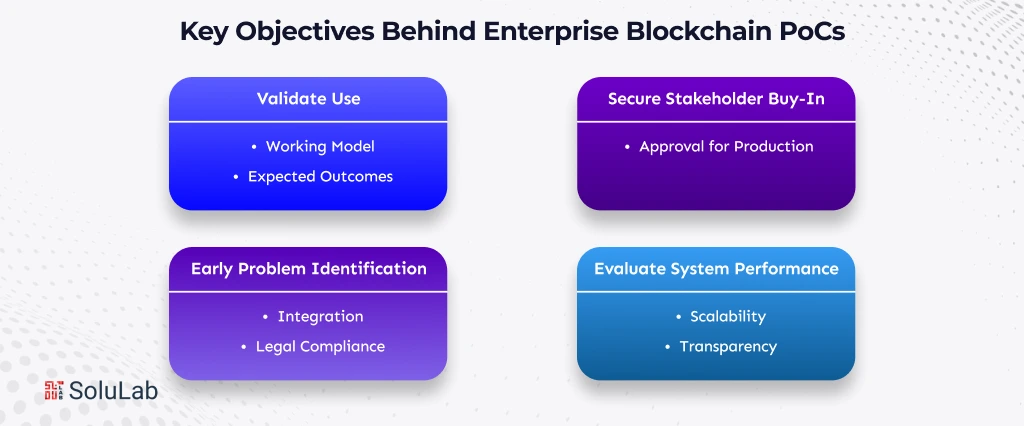
Step-by-Step Process of Blockchain Implementation
Implementing blockchain in an enterprise isn’t just about adopting new technology—it’s about transforming processes, enhancing trust, and unlocking new business models. The journey typically moves like this:
1. Defining Business Goals and Technology Requirements
Blockchain PoCs begin with identifying what the enterprise wants to achieve. Is it about tracking supply chain items or automating contracts? Once the goal is clear, teams outline key technical needs. These could include data privacy, smart contract use, or permissioned access.
At this point, clarity is essential. The better defined the requirements, the smoother the development. Proof of Concepts in Blockchains work best when aligned with core business goals and constraints.
-
Aligning Blockchain Use Cases with Enterprise Needs
Not all problems need blockchain. That’s why it’s important to match real use cases with the technology’s strengths. Enterprises must ask if the problem involves trust, transparency, or decentralization.
If the answer is yes, blockchain could help. A use case like cross-border payments or digital identity fits naturally. A blockchain proof of concept development ensures the use case isn’t forced but strategically chosen.
-
Determining Technical, Legal, and Operational Scope
Enterprises must plan for more than just coding. PoC projects also consider legal compliance and regulatory policies. For example, if the project handles personal data, GDPR guidelines may apply.
Technical scope covers API integration, node setup, and blockchain architecture. Operational scope includes team roles, timelines, and internal testing plans. All these pieces must align before development begins.
2. Stages Involved in Blockchain PoC Development
PoC development unfolds in distinct, manageable stages. Each step reduces uncertainty and sharpens the solution.
-
Theoretical Framework and Functional Mapping
This stage defines the problem, solution hypothesis, and expected blockchain behavior. It includes logic flows, data structures, and performance expectations. Teams map out how blockchain will process inputs and deliver outputs. Diagrams help everyone visualize how the concept fits together.
-
Product Planning and Feasibility Validation
Next comes the plan for building the working model. Developers check available resources and validate technical feasibility. Can the system handle transaction speed? Does it need a public or private blockchain? The answers shape the actual development timeline.
3. Blockchain Platform Selection and Integration Assessment
Enterprises choose between platforms like Ethereum, Hyperledger Fabric, or Polygon based on the use case. Each option comes with trade-offs in terms of speed, cost, and flexibility. Integration with legacy systems is also evaluated. Smooth integration reduces friction and future costs.
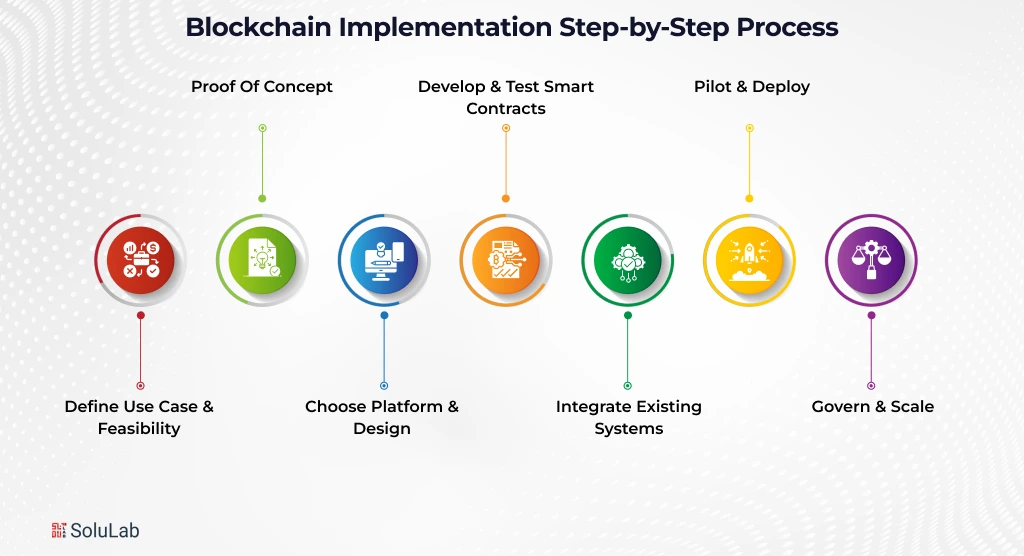
Major Cost-Influencing Factors in PoC Development
Costs vary based on features, complexity, and team structure. However, a few elements consistently impact total spend.
-
Resource Allocation and Man-Hour Calculations
PoC development requires blockchain architects, backend developers, frontend teams, and QA testers. Depending on the project scope, even a small team may log hundreds of hours. Time spent equals money. Hourly rates vary based on location, experience, and project urgency. A basic blockchain PoC typically requires 2-4 blockchain developers, 1 product manager, and 1 QA tester.
Standard developer rates range from $40 to $150 per hour, depending on the location and expertise. A 3-month PoC project with a lean team may cost between $30,000 and $70,000.
-
Tooling, Infrastructure, and Third-Party Licensing Costs
Tooling includes blockchain SDKs, APIs, and development environments. Infrastructure covers hosting, node deployment, and cloud usage. If third-party tools are used, licensing costs apply. While open-source platforms reduce this burden, enterprises often choose commercial tools for security and reliability.
- Cloud infrastructure (AWS, Azure, etc.) and developer tools may cost $1,000 to $5,000 monthly.
- Third-party APIs, SDKs, or blockchain platform fees can add another $2,000 to $8,000.
- Expect a typical tooling budget of $5,000 to $15,000 for a PoC stage.
-
Hidden Costs and Risk Buffer Estimations
Unexpected costs arise from system bugs, scope changes, or legal hurdles. Smart enterprises build a 10-20% risk buffer in budgets $5,000 to $10,000. Also, stakeholder coordination, documentation, and internal approvals consume time. These must be included in total PoC cost estimates.
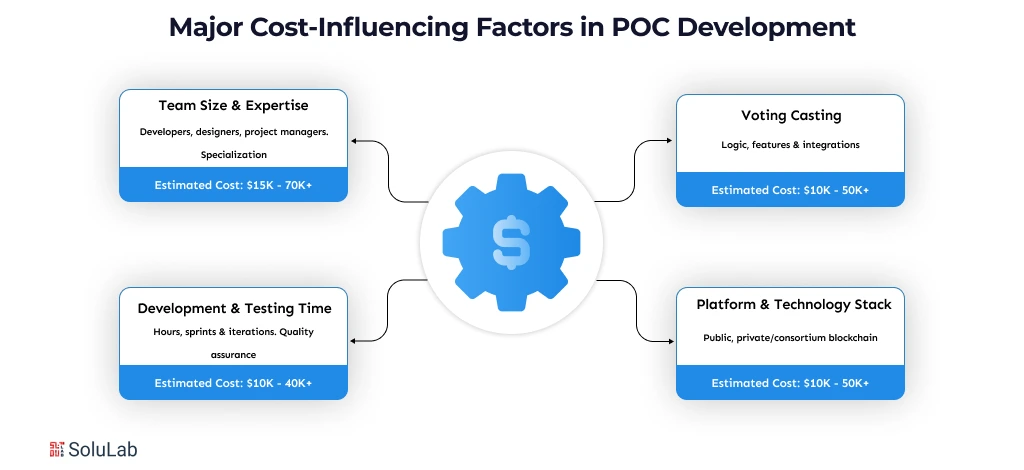
Evaluating PoC Results Before Scaling Further
Once the PoC is done, it’s time to analyze the outcomes. Did it perform as expected? Were all test cases successful?
-
Technical Validation and Use Case Suitability
Teams evaluate if the blockchain model handled data as expected. If it failed under load or missed conditions, the use case might need revision. Scalability tests are run, especially for enterprise-level applications. Security audits are also conducted.
-
Stakeholder Feedback and Data-Driven Insights
Results are shared with business and technical leadership. Stakeholders check if KPIs were met. They assess the business value created by the PoC. Feedback shapes the final decision—whether to move ahead, revise, or stop entirely.
Transitioning from Blockchain PoC to Production
Moving from PoC to production requires scaling the architecture and tightening the workflows. This is not a copy-paste job. Real-world traffic, regulations, and risks make it more complex.
-
Designing Scalable Architecture and Network Setup
Developers design an architecture that supports production-scale usage. This includes selecting between public, private, or hybrid blockchains. Network design includes nodes, consensus methods, and API access layers. Scalability becomes a key concern, especially for global or high-traffic applications.
-
Governance, Compliance, and Performance Monitoring
Enterprises implement governance models defining who controls nodes, permissions, and updates. Compliance frameworks ensure that the production blockchain meets legal standards. Real-time monitoring tools are integrated to catch performance issues early. This includes alerts, analytics dashboards, and incident reports.
Full-Scale Production Cost Considerations for Enterprises
Production deployment is a long-term investment. It involves both fixed and recurring costs. These need planning and periodic review.
1. Maintenance, Support, and Upgradation Requirements: Blockchain systems require regular updates. Smart contracts may need patches. Network components may need scaling. Dedicated support teams are formed. Maintenance contracts with vendors or consulting teams add to recurring costs. These services ensure uninterrupted operations.
2. Long-Term ROI and Cost-to-Value Optimization: Enterprises must compare long-term returns against initial investments. Metrics like reduced fraud, improved transparency, or automated workflows show value. ROI may take months to years. But well-implemented solutions often reduce operational costs and improve efficiency.
Conclusion
Adopting blockchain isn’t just a technology upgrade—it’s a strategic move that can redefine how your enterprise operates. The journey from PoC to full-scale production demands the right expertise, tailored strategies, and seamless integration with existing systems.
As a trusted blockchain development company, SoluLab empowers enterprises to navigate every stage of their blockchain journey—right from identifying high-impact use cases to building scalable, secure, and cost-effective production-grade solutions. With proven expertise across platforms like Hyperledger, Ethereum, Polygon, Avalanche, and Solana, we ensure your blockchain implementation is future-ready, compliant, and delivers measurable ROI.
Contact us today to transform your business with leading-edge blockchain solutions!
FAQs
1. How much does it cost to develop a blockchain PoC?
Blockchain proof of concept development usually costs $5,000 to $10,000 for basic. And specific charges depending on team size, tech stack, and timeline. Proof of Concepts in Blockchains help avoid larger future costs.
2. Why do enterprises need a blockchain PoC before full production?
PoCs help test technical feasibility and business value. Proof of concept development gives clarity before large investments, reducing risk and aligning use cases with enterprise goals.
3. What services are included in blockchain consulting and PoC development?
They include use case validation, tech stack selection, development planning, and stakeholder alignment. Blockchain consulting and proof of concept development services guide early stages with expert insights.
4. Can you skip PoC and go straight to production?
Skipping PoC is risky. Without it, you might miss key integration issues or cost surprises. Proof of Concepts in Blockchains ensure you build smarter, not just faster.
5. Is blockchain PoC really worth it… or just trendy tech theater?
That’s a fair question. But real-world PoCs uncover flaws early. They’re not just buzzwords; they offer honest validation, especially when backed by strong blockchain consulting and proof of concept development services.



